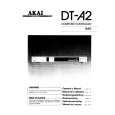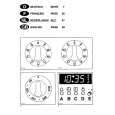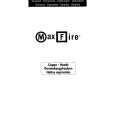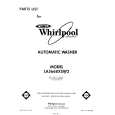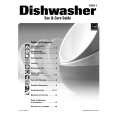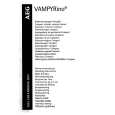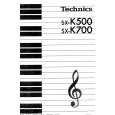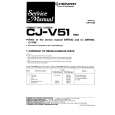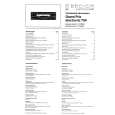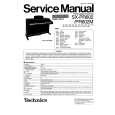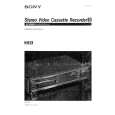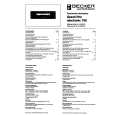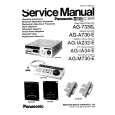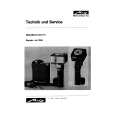|
|
|
Kategorie
|
|
Informacje
|
|
Polecamy
|
|
|
 |
|
|
Dla tego produktu nie napisano jeszcze recenzji!
 ;
Instrukcja bardzo czytelna. zawiera co potrzeba. Polecam
 ;
...instrukcja serwisowa w pełni czytelna i kompletna. Dziękuję!
 ;
Instrukcja Serwisowa jest kompletna i czytelna. Dziękuję!
 ;
Wszystko OK!
Dokumentacja jest czytelna.
Dziękuję.
 ;
Bardzo dobra jakość skanu, przystępna cena. Instrukcja serwisowa okazała się przydatna przy "reanimowaniu" dwudziestoparoletniego decka, który teraz pięknie gra :)
R-7H55
THERMISTOR
The thermistor is a negative temperature coefficient type. The temperature in the oven cavity is detected through the resistance of the thermistor, and then the control unit cause the heating element relay to operate, thus the current to the heating element is turned ON/OFF.
DAMPER OPEN-CLOSE MECHANISM
Usually, the damper is in the open position except during convection cooking. Damper position is set automatically by damper motor, damper switch, damper cam and damper shaft. These components are operated by a signal that judges if microwave cooking or convection cooking operation is selected by the control unit. Microwave Cooking: Damper is in the open position, because a portion of cooling air is channeled through the cavity to remove steam and vapors given off from the heating foods It is then exhausted at the top of the oven cavity into a condensation compartment. Convection Cooking: Damper is in the closed position, so that no hot air will be allowed to leak out the oven cavity. Damper Operation 1-1. When power supply cord is plugged in, a signal is sensed in the control unit, and operates shut-off relay (RY6). 1-2. Contacts of shut-off relay (RY6) close, the damper motor is energized, opening the damper door. 1-3. When the damper is moved to the open position by the damper cam the damper switch is closed (ON position). 1-4. The signal of damper switch is re-sensed in the control unit and shut-off relay (RY6) is turned off. 1-5. The A.C.line voltage to the damper motor is removed and the motor turns off. 2. When oven is microwave cooking: Damper is in the open position. 3. When oven is convection cooking: 3-1. Damper motor is energized by touching the convection, temperature and START pads. 3-2. When damper is in the closed position (damper switch is OFF), its signal is sensed by the control unit, and shut-off relay (RY6) is de-energized. 3-3. The damper is held in the closed position during the convection cooking operation. 3-4. At the end of the convection cooking, shut-off relay (RY6) is energized, and the damper is returned to the open position. NOTE: If the damper door is not in the proper position, closed during convection or open during microwave, the control unit will stop oven operation after 1 minute.
DAMPER CAM DAMPER SHAFT DAMPER SWITCH
TURNTABLE MOTOR
The turntable motor drives the turntable roller assembly to rotate the turntable.
CONVECTION MOTOR
The convection motor drives the convection fan and provides the heated air.
FAN MOTOR
The fan motor drives a blade which draws external cool air. This cool air is directed through the air vanes surrounding the magnetron and cools the magnetron. This air is channelled through the oven cavity to remove steam and vapours given off from the heating foods. It is then exhausted through the exhausting air vents at the oven cavity
HEATING ELEMENT
The heating element is located at the rear side of the oven cavity. It is intended to heat air driven by the convection fan. The heated air is kept in the oven and force-circulated and reheated by the heating element.
CONVECTION COOKING SYSTEM
This oven is designed with a hot air heating system where food is not directly heated by the heating element, but is heated by forced circulation of the hot air produced by the heating element. The air heated by the heating element is circulated through the convection passage provided on the outer casing of the oven cavity by means of the convection fan which is driven by the convection motor. It then enters the inside of the oven through the vent holes provided on the rear side of the oven. Next, the hot air heats the food on the turntable and leaves the oven cavity through the vent in the center of the oven cavity rear side wall. Without leaving the oven, this hot air is reheated by the heating element, passes through the convection passage and enters the inside of the oven cavity again, in a continuing cycle. In this way, the hot air circulates inside the oven cavity to raise its temperature and, at the same time, comes into contact with the food being cooked. When the temperature inside the oven cavity reaches the selected temperature, the heating element is de-energized. When the temperature inside the oven cavity drops below the selected temperature, the heating element is energized again. In this way, the inside of the oven cavity is maintained at approximately the selected temperature. When the convection time reaches 0, the heating element is de-energized and the convection fan stops operating and the oven shuts off.
CUSHION
DAMPER DUCT DAMPER PLATE DAMPER MOTOR
Figure D-2. Damper Mechanism
8
|
|
 |
> |
|
